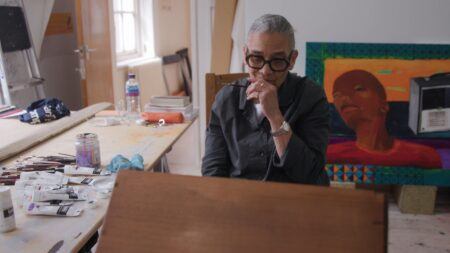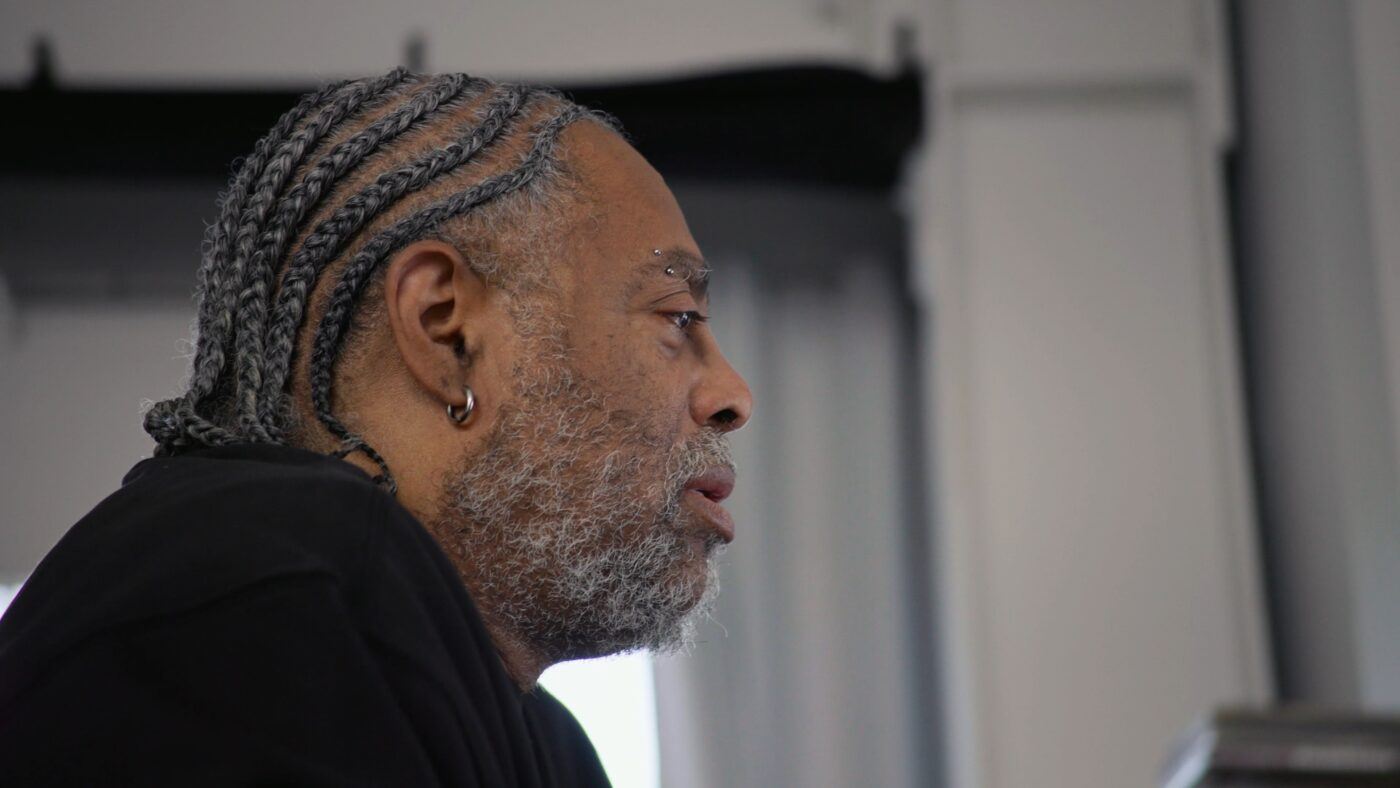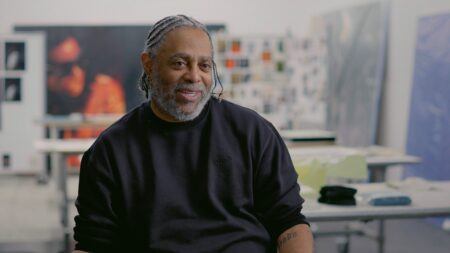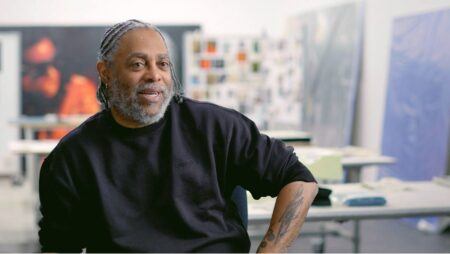Before coming on as the director of this film, I thought I understood Arthur Jafa’s practice. I had seen APEX and Love is the Message, the Message is Death, and saw AJ’s work as chronicling Black life in America, both the good and the bad. I still think that’s true—his films do offer a nuanced portrait of Black life. But in making this film, I’ve realized that the work goes beyond simply chronicling or archiving. AJ is enunciating what Blackness is, a specific way of being that has been produced by centuries of a specific and brutal conditioning, and the drive to survive and thrive in the face of that conditioning. He’s identifying what Blackness is as a way of thinking, making, and existing.
Going into this film, I was kind of daunted and terrified of how to approach this artist who has a monumental presence in culture, who is so intellectually rigorous, and who has such a rich aesthetic vision. But once I sat down to interview AJ, that fear went away. Not because he soothed and reassured me (he didn’t) but because he offered banger after banger, so many ideas and metaphors and references that helped guide me through making this film. Talking with him was incredibly clarifying and edifying and gave me such a clear vision for this film, and also for my work, and questions around what it means to be producing anything as a Black person.

In our interview, AJ said something that didn’t make it into the film but stuck with me throughout the process, which was “I’m increasingly less interested in what Black people think, meaning the conclusions that they come to, and more interested in how we think, how we approach a problem or a notion.” That statement really unlocked the work for me and showed me how to approach directing this film. What it helped me realize is that AJ’s work is not about a conclusive statement, but about examining a process. It’s like that classic directive on a math test, “Show your work.” His films, photographs, and installations do that; they show a specifically Black arithmetic between the question and the answer, and so I wanted this film to try and do the same. The question became, how do we uncover how and why AJ does what he does, rather than trying to explain a final product.
I’m approaching filmmaking with three distinct brains working together: a curator, an artist, and a filmmaker. The curatorial part of my brain is the part that reminds me of the things that need to be in the film in order for audiences to have the proper context and support to understand what they are seeing, and it’s the part that I’m using to organize all of the information that I want to convey through the film. As an artist, I’m interested in finding ways to communicate ideas through formal and aesthetic decisions, which felt important in this film as we were translating largely intangible and invisible mental processes or embodied experiences into a visual language. That third brain, the filmmaker brain, is the least developed of all three brains, so I have all these thoughts about how a scene should look or how an edit should flow, but often no idea how to do that or if it’s possible. Perhaps as a result, that brain is also a super collaborative brain. I’m really leaning on fantastic collaborators, like the film’s editor Winnie Cheung, who edited this film, and our production team here at Art21, to understand what I’m trying to do and know how to do it.

I think that is how we arrived at one of my favorite scenes in the film, the Picture Unit sequence. The Picture Units, AJ’s large architectural, maze-like installations filled with images, have become some of my favorite works of AJ’s during the process of making this film. The experience of the Picture Unit, for me, is like physically walking through the internet: it can be disorienting and dizzying, the assortment of images you encounter feels just specific enough to not feel random but the organizing principle isn’t fully clear either, and suddenly you’ll get hit with an image depicting graphic violence that makes you question everything you’ve seen before and all that you’ll see after. Now, the reason I like this section of the film so much is because we were trying to capture that embodied experience of moving through the Picture Unit, the confusion and dizziness, the surprise, the feeling of being a bit trapped, while also situating people in the space and giving them an opportunity to read the images. I think where we landed does that, but it took a lot of edits and tweaks to get that balance of clarity and disorientation just right. That’s thanks to Winnie, who was able to translate descriptions of what I wanted this scene to feel like into something concrete.
What I hope this film offers is an insight into how AJ thinks, but perhaps not what he thinks. I hope the film offers ways of seeing the enunciations of Blackness that he presents through his works without prescribing what those might be. I want people to come away from the film with a greater understanding of the nuances of Black life, thinking about Blackness as a source of both abjection and of flight, and a complex field from which we must produce life.
Jurrell Lewis
Director, “Arthur Jafa: Sequencing the Notes”
April 30, 2025
IMAGES: Production stills from the Extended Play film, “Arthur Jafa: Sequencing the Notes.” © Art21, 2025.



